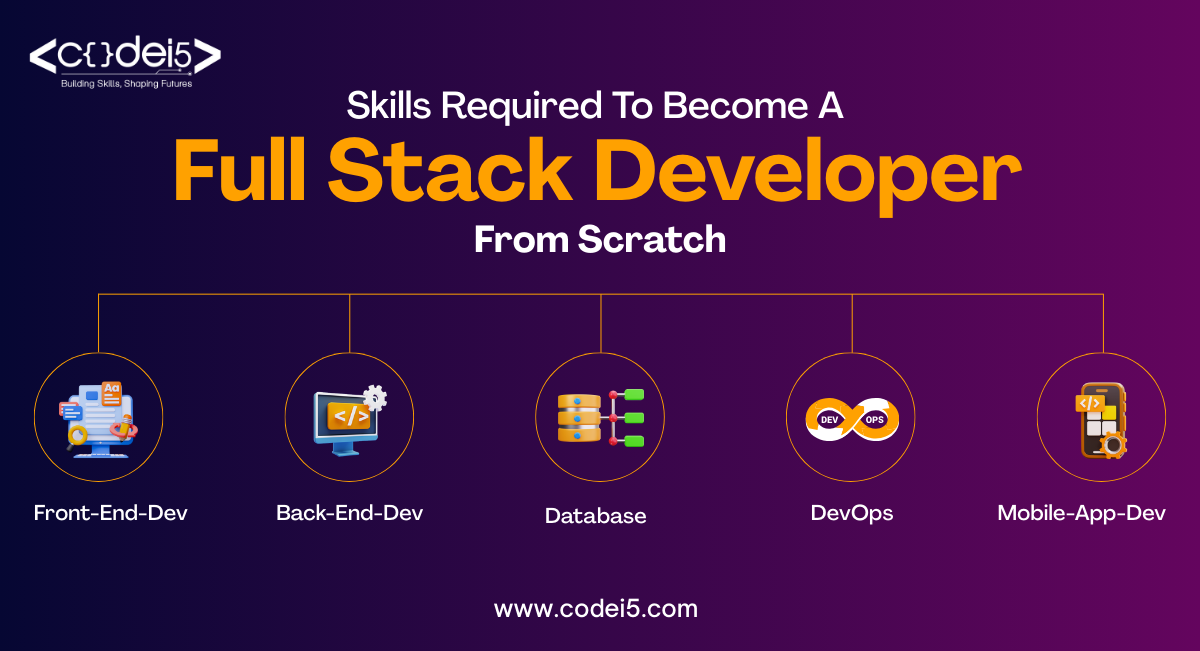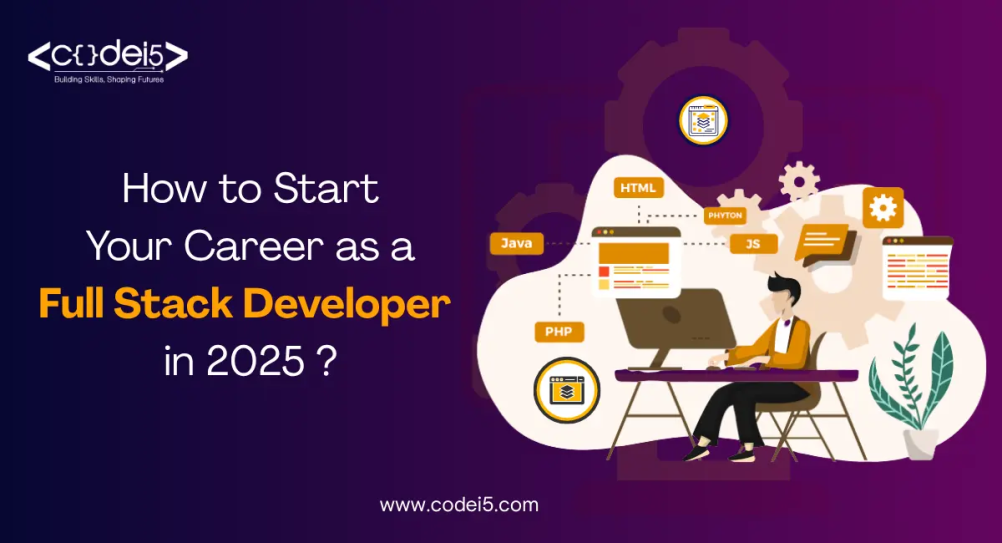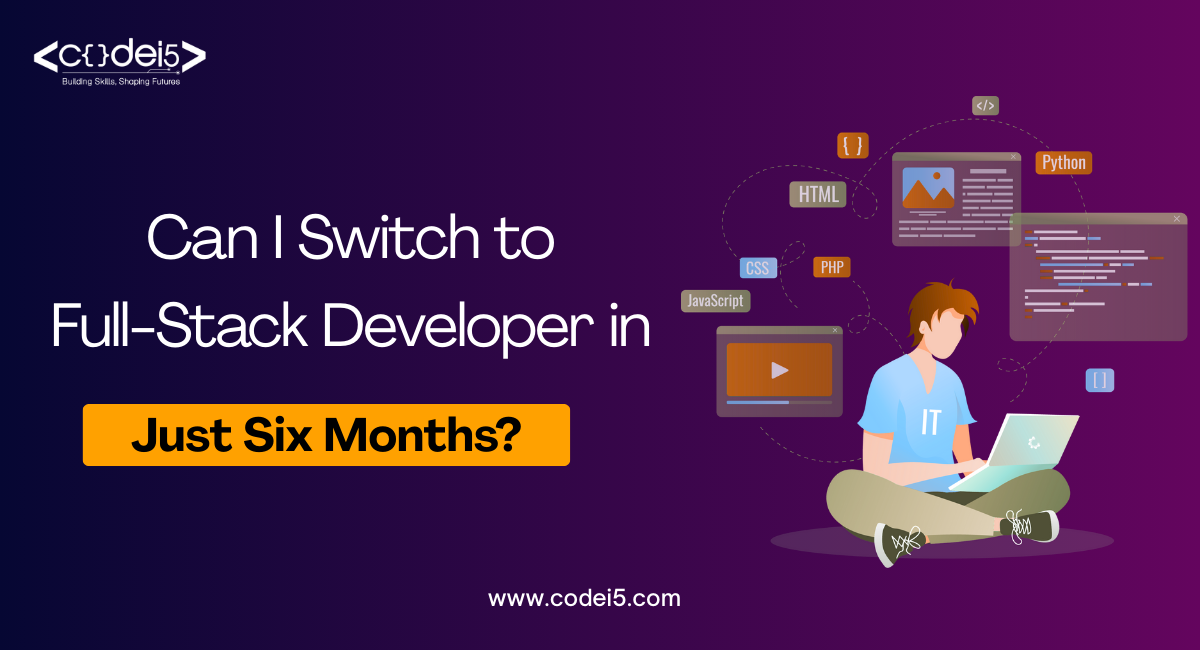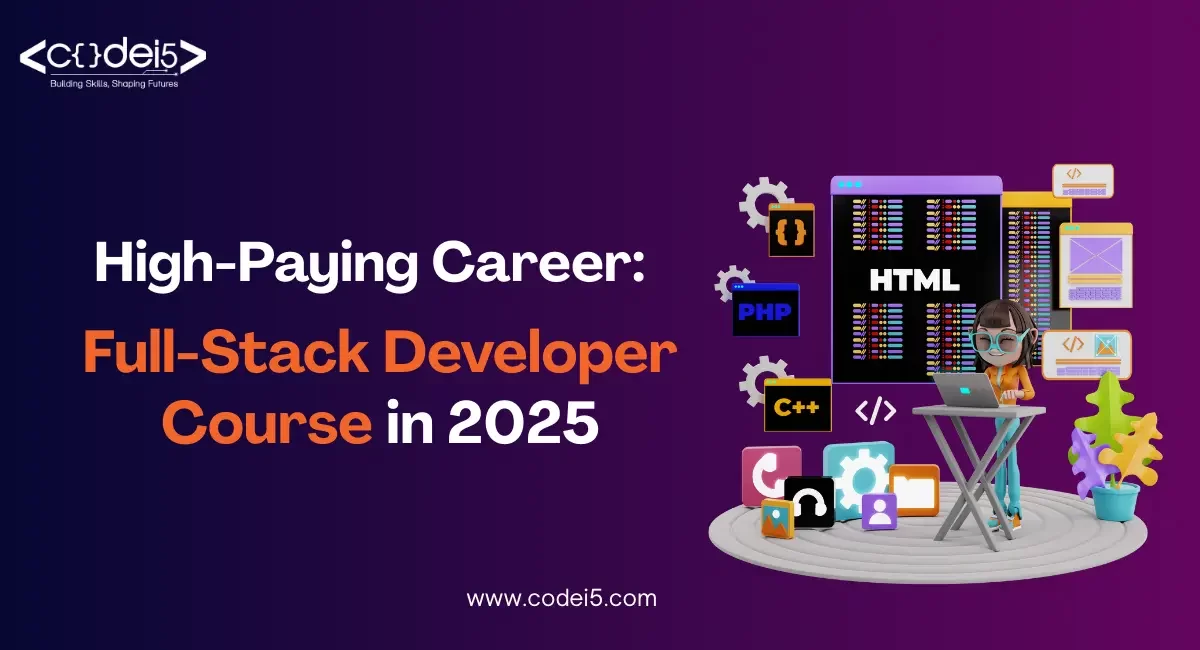How to Become a Full Stack Developer: 2024 Career Guide

In today’s ever-changing technological scene, becoming a Full Stack Developer is an exciting professional opportunity. As we approach 2024, the demand for people with comprehensive abilities in both front-end and backend development continues to increase. Web coding is the core talent in full-stack development that connects the front-end and back-end, allowing developers to create seamless and responsive user interfaces while maintaining strong operations behind the scenes. Web development is the foundation, combining front-end and backend technology to build dynamic and interactive digital experiences. If you want to start this exciting adventure and build a successful career in Full Stack Development, this thorough guide will give you the roadmap and insights you need.
Keyskills required:
1. Front End Development:
HTML, CSS, and JavaScript are fundamental building elements for developing interactive and responsive user interfaces.
Front-end frameworks: Knowledge of popular frameworks such as React, Angular, and Vue.js.
2. Backend Development:
Server-side programming requires proficiency in server-side languages such as Node.js, Python (Django or Flask), Ruby (on Rails), Java, or PHP.
Database Management: Knowledge of both relational (e.g., MySQL, PostgreSQL) and non-relational databases (e.g., MongoDB).
3. Database & Cache:
Database Management Systems: Understanding and utilizing various database systems to store and retrieve data efficiently.
Caching Mechanisms: Using caching mechanisms to improve application speed.
4. Version Control with Git:
Git: Expertise in utilizing version control systems such as Git to track changes and collaborate with other engineers.
5. Server and Deployments:
Configuring and managing web servers (such as Nginx and Apache).
Deployment: Understanding of deployment methods and tools (such as Docker and Kubernetes) for deploying apps.
Keep in mind that the technology landscape is continuously changing, so being current on the latest trends and technologies is also an important part of being a successful full-stack developer.
Educational Background and Learning Paths:
The decision between standard degrees and bootcamps is influenced by a variety of factors, including your career objectives, learning style, time commitment, and financial means. Building a broad educational background in full-stack development frequently begins with mastering foundational languages like C programming, creating a solid basis for a varied and dynamic skill set. Both paths have advantages and downsides, and individuals should consider these factors to determine which path best fits their needs. Here’s a breakdown of some important considerations:
Advantages:
Traditional degrees often provide a broader and more in-depth education that includes theoretical foundations and a variety of relevant areas.
Networking prospects: Attending a university frequently gives you access to a larger network of peers, professors, and alumni, which can be useful for future job prospects.
Credibility: Degrees from reputed institutions have a certain level of credibility and are accepted by companies in a variety of industries.
Disadvantages:
Time-consuming: Traditional degrees normally take several years to complete.
Tuition, living expenses, and potential student loans can all add up to a higher cost while pursuing a traditional degree.
Less focus on Practical abilities: Some traditional degree programs may prioritize theory over practical, hands-on abilities required in the workplace.
Bootcamps:
Advantages:
Speed: Bootcamps are designed to be intensive and concentrated, allowing students to learn skills in less time than typical degree programs.
Practical Skills: Bootcamps frequently stress practical, job-ready skills, preparing graduates for specific roles in the industry.
Cost-effective: Bootcamps are often less expensive than standard degrees, and several offer flexible payment plans.
Disadvantages:
Limited Depth: Bootcamps may not provide as much theoretical background as regular degrees; instead, they focus on practical abilities applicable to specific career roles.
Networking chances: While some bootcamps offer networking chances, they may not be as broad as traditional universities.
Perceived legitimacy: The legitimacy of bootcamps varies, and some businesses may still prefer individuals with traditional degrees from reputable institutions.
Building a Strong Foundation: Front-End Development
Welcome to Front-End Development, the vivid world of pixels and accuracy! As the face of user contact, a solid foundation of front-end skills is essential. Whether you’re creating seamless user experiences or delving into the complexities of responsive design, this is your guide to mastering the art of front-end development.
1. HTML, CSS, JavaScript:
HTML (Hypertext Markup Language) is the foundation of website content organization.
CSS (Cascading Style Sheets) is your layout and design styling guru.
JavaScript: The dynamic power that drives interactive and entertaining web experiences.
2. Responsive design and CSS frameworks:
Learn how to make your creations adapt easily to different devices.
For maximum efficiency, consider using popular CSS frameworks such as Bootstrap or Tailwind CSS.
3. Front-end frameworks:
Master frameworks like React, Angular, and Vue.js to create scalable and efficient applications.
Understand component-based architecture for creating reusable UI elements.
4. Version control with Git:
Learn Git for collaborative coding and version control.
5. Website Performance & Optimization:
Explore ways to improve website performance and loading times.
Explore tools such as Lighthouse and PageSpeed Insights.
6. Browser Dev Tools:
Use browser developer tools to troubleshoot and optimize code.
7. Website accessibility (A11y):
Ensure that your websites are inclusive and accessible to all visitors.
Acquaint yourself with the ARIA (Accessible Rich Internet Applications) standards.
8. Create tools and task runners:
Understand the use of build technologies like Webpack and task runners like Gulp to automate workflows.
9. Cross-browser compatibility
Learn the subtleties of making your projects cross-browser compatible.
10. Soft skills:
Effective communication and collaboration are essential. Collaborate closely with designers, backend developers, and stakeholders.
Enrolling in a valued training institute is a crucial step for aspiring full-stack developers, as it provides comprehensive programs that equip individuals with the necessary skills and knowledge for success in the ever-changing area of web development.
Job strategies and networking:
Starting a job search journey? Here’s your road map to success, combining smart techniques with the power of networking to bring up new chances.
1. Create an impactful resume and cover letter:
Customize your resume to highlight relevant skills and experience.
Create a captivating cover letter that demonstrates your enthusiasm and suitability for the post.
2. Use Online Job Platforms:
Examine job boards such as LinkedIn, Indeed, and Glassdoor for open positions.
Set up job notifications to be updated on relevant opportunities.
3. Establish a strong online presence:
Improve your LinkedIn profile by including a professional photo, thorough career history, and abilities.
Showcase your portfolio or projects to show actual proof of your expertise.
4. Networking Strategically:
Attend industry events, meetings, and conferences to network with professionals.
Participate in online forums, LinkedIn groups, and Twitter discussions relevant to your field.
5. Informative interviews:
Contact professionals for informative interviews to learn more about their positions and industry.
Instead of simply asking for work prospects, develop relationships and seek advice.
6. Use Career Services:
If you’re a recent graduate, contact your university’s career services for employment leads, resume critiques, and interview advice.
7. Customise Applications:
Tailor your job applications to each individual role.
Highlight how your talents and experiences make you an excellent candidate for the role.
8. Create a professional network:
Connect with colleagues, classmates, and industry experts via LinkedIn.
Attend networking events, both in-person and electronically.
9. Online portfolio or personal website:
Display your work, projects, and accomplishments with an online portfolio or personal website.
Provide links to relevant projects to show the value you contribute.
10. Volunteer/Freelance Opportunities:
Volunteering or doing freelance work might help you get experience and broaden your network.
Showcasing your contributions to actual projects can help you gain credibility.
Conclusion:
Becoming a Full Stack Developer in 2024 entails more than simply mastering languages and frameworks. Enrolling in a full-stack developer course allows ambitious developers to obtain knowledge in both front-end and backend technologies, assuring a well-rounded skill set for a successful career in the dynamic field of full-stack development. It also requires establishing an attitude of continual learning and adaptation. Following this comprehensive book will prepare you not just for a profession but also for a journey of growth and innovation in the fast-paced world of Full Stack Development. Accept the obstacles, be curious, and allow your enthusiasm to drive your achievement.
Happy coding!







